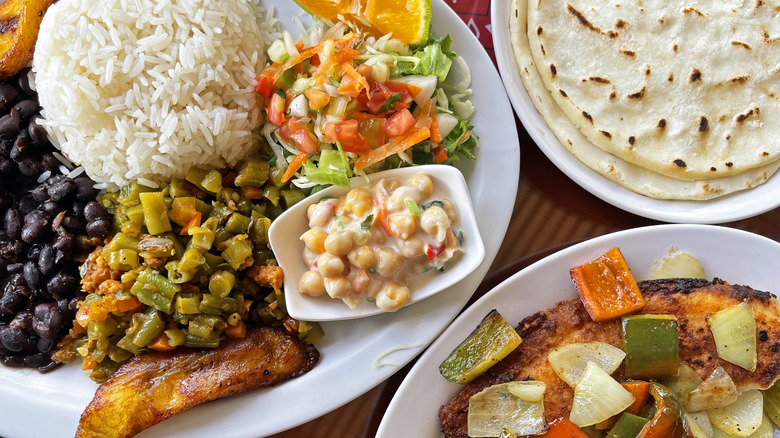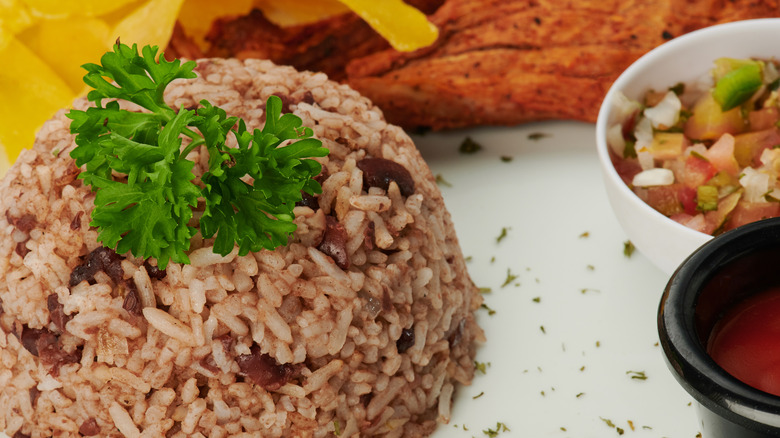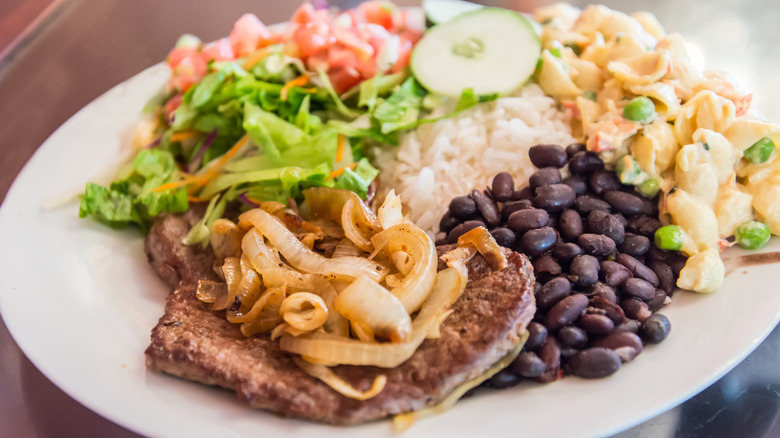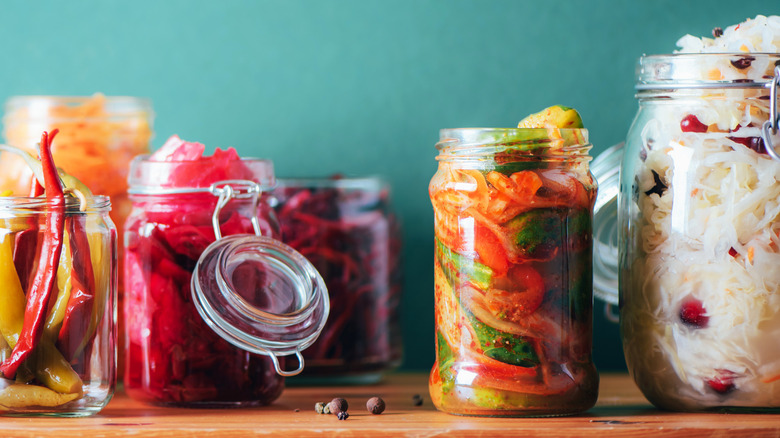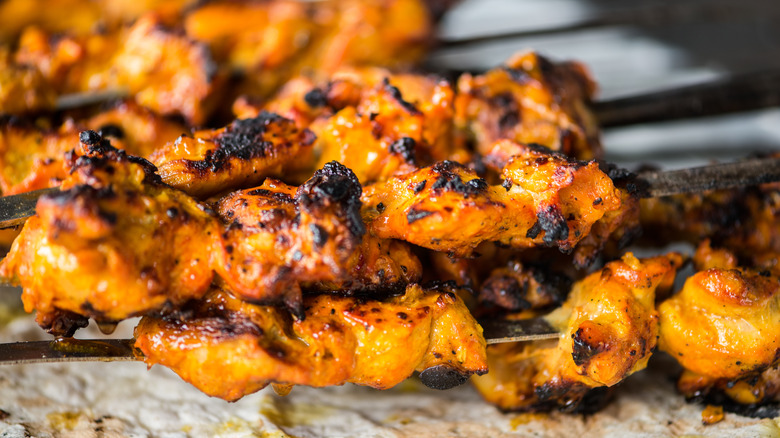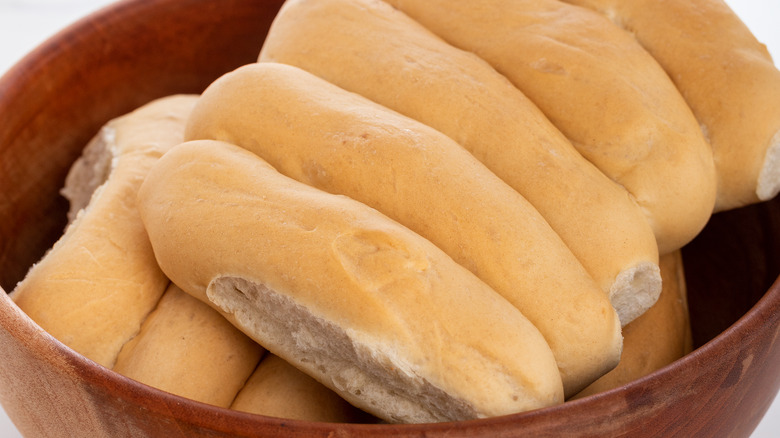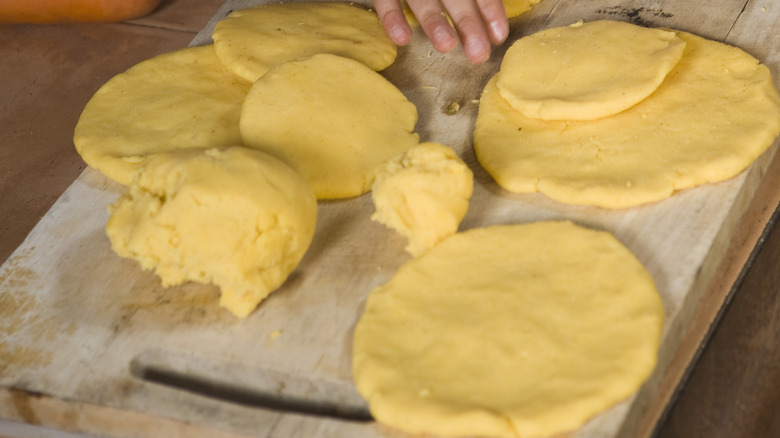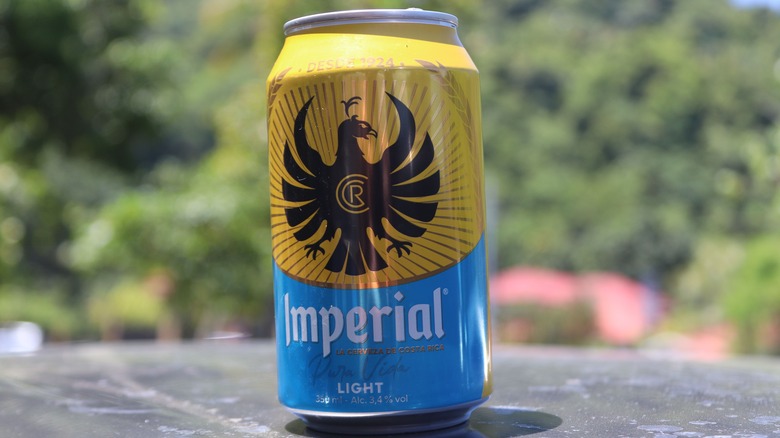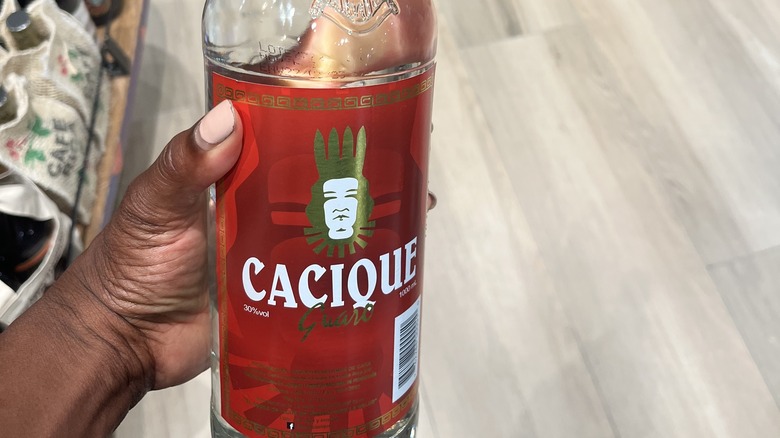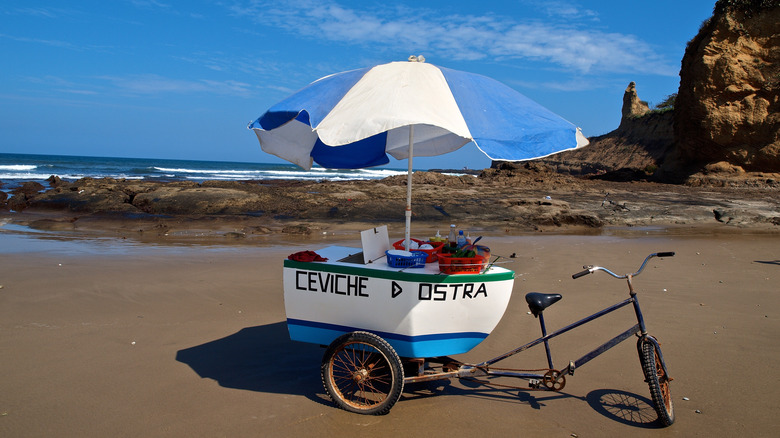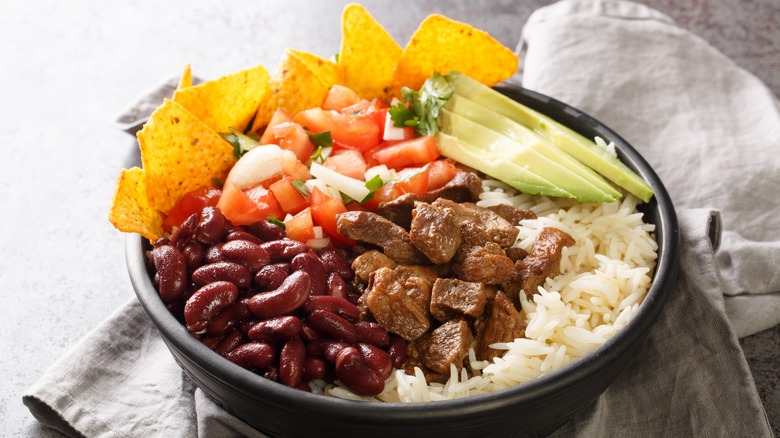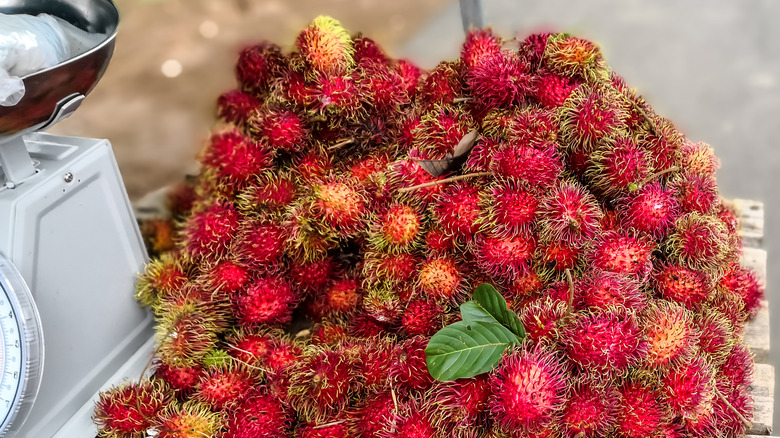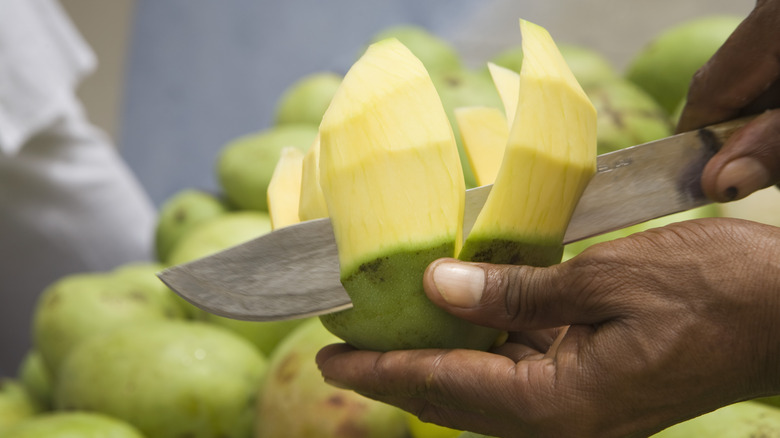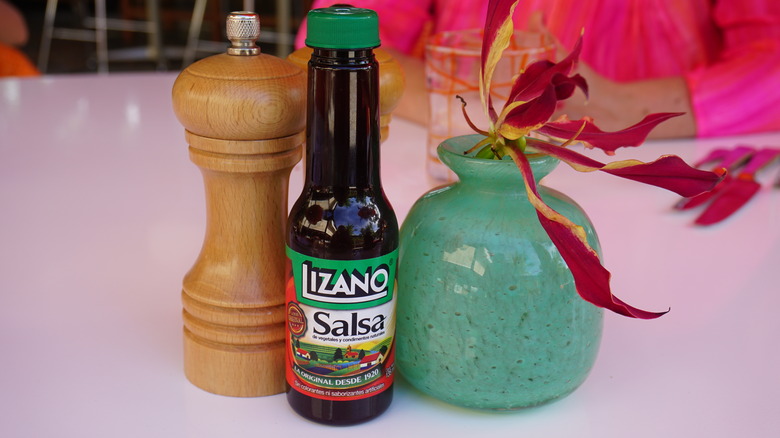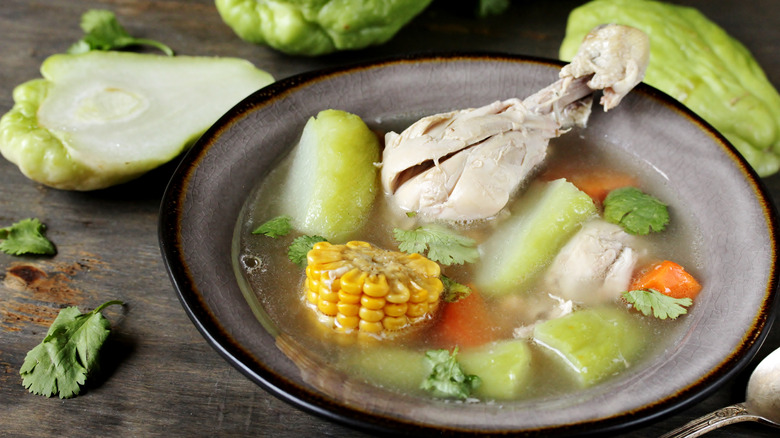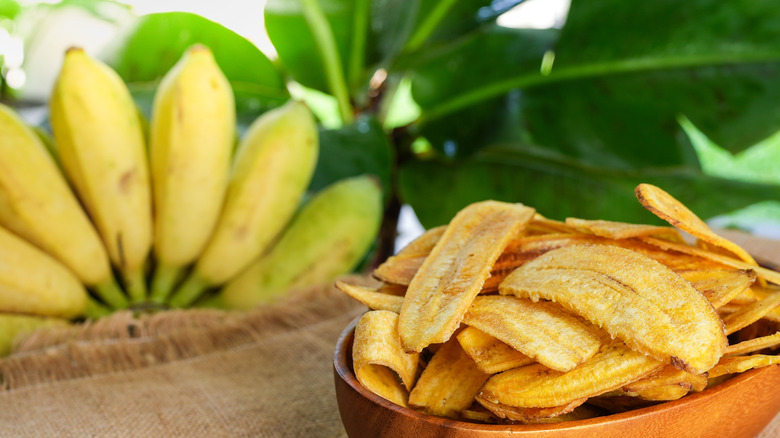16 Tips For Dining In Costa Rica Like A Local
For the uninitiated, traveling to and eating in one Central American country probably seems like traveling to and eating in any Central American country. But every country has its own customs, culture, and heritage, which means that every country develops its own dishes and manner of serving them. So while you may know what you're getting when you order a taco in Mexico, you may be surprised to receive what looks more like a flauta or taquito when you request a taco in Costa Rica.
If you're planning to make a trip to the tiny country (its land mass is about the size of West Virginia), expect to be impressed by the food – the country boasts a remarkable 5% of the world's biodiversity – which means there are lots of ways to get creative with foods and flavors. Just don't go in expecting to be served the world's best hamburger or to get a deep-dish pizza served up the way you would in Chicago. If you want to truly enjoy the food scene in Costa Rica, it's essential to order and eat like a local — it's the only true way to take advantage of the rich food (comida rica) from the Rich Coast (Costa Rica).
Start every day with rice and beans
It's not "normal" to eat rice and beans for breakfast in the States, but it's practically a requirement if you're living in Costa Rica. In fact, the country's national dish is gallo pinto (which translates to "spotted rooster"), a flavorful combination of rice, red or black beans, sweet peppers, onions, and Lizano Salsa. While it can certainly be served and eaten any time of the day, it's most commonly enjoyed for breakfast, using the leftover rice and beans from the day before (at least, if you're making it at home).
One thing you can be sure of, gallo pinto (also shortened to simply "pinto") will be available on the menu of practically any Costa Rican restaurant. Be sure to order a serving alongside eggs, fried plantains, and fresh fruit. You won't be disappointed. Oh, and if you love the tangy flavor of Lizano Salsa (it's a bit like Worcestershire sauce), be sure to drizzle some extra on top.
Put ketchup and mayonnaise on everything
Costa Ricans seem to have a love affair with ketchup and mayonnaise. These aren't sauces to be used only on hamburgers or fries, they're added to practically every dish you can imagine. Whether it's a local portion of arroz con pollo (rice and chicken), a takeout order of Chinese food, or an appetizer of nachos, don't be surprised when you see the locals pick up the bottles of ketchup and mayonnaise to add to the flavor of the dish.
Word to the wise? It's not just the locals purchasing the food that make these saucy additions — food vendors may use them as well, leaving you a bit surprised at the state of your order. It's not unusual to receive a plate of nachos or tacos (which, again, may appear more like flautas) drenched in the two sauces. If you're a ketchup and mayonnaise lover, feel free to lean into the trend — no one's going to judge you for squirting ketchup on your fish (or even your salad). But if you don't love ketchup and mayonnaise? Always ask how the meal is served before placing an order, especially when eating at small, local joints.
Oh, and if you love mustard? Don't expect to find it waiting on the table at a restaurant unless you're in a tourist spot. Mustard isn't something typically enjoyed by locals.
For a complete meal, make it a casado
Casado in Spanish means married, and if you're looking for a full meal deal of sorts, check out the "casados" section on the menus at Costa Rican restaurants. The proteins are varied, but you can expect them to arrive on the plate alongside rice, black beans, a salad, and sometimes fried plantains, pieces of tortillas, cheese, or avocado slices. In other words, your protein is "married" with a set of sides that are guaranteed to fill you up.
Don't be shy about trying different proteins, too. You'll likely be somewhat familiar with things like chicken breast, shredded beef in salsa, bistek (a thin slice of beef), fish, shrimp, pork, or a vegetarian option of grilled veggies. What you might not be familiar with are options like chicharrones, or mondongo (cow or pig intestines). The options are only limited by your own culinary comfort and curiosity.
Spice up your meals with chiletico
You might be surprised that Costa Rican food, for the most part, isn't particularly spicy. As a whole, it's fairly mild, but certainly, Ticos (what Costa Ricans call themselves) don't shy away from added heat. It just doesn't necessarily come in the form of red chile flakes or salsas, but as hot sauce (like Frank's Redhot) or more likely, chiletico.
Chiletico is frequently found in jars on the table at restaurants or in big vats in the food vendor areas during special events. It essentially looks like pickled or fermented vegetables — often a mix of onions, cucumbers, broccoli, cauliflower, and carrots, along with a variety of hot chiles. The vegetables can be eaten a bit like a spicy salad, or mixed with rice and beans to amplify the flavor of these anchor ingredients. The liquid, too, is often used as "salsa," added to soups, spooned over fried chicken, or ladled onto fresh greens to add a little acidity and a punch of spice.
Buy the street meat
Sure, the person with a rickety grill standing by the side of the road or just outside the gates of an event may seem like a sketchy person to buy a kabob from, but if there's a line of Ticos ready to pay a rojo or two (the equivalent of a couple of bucks) to chow down on a stick of meat, it's probably pretty good. Honestly, grilled meat served on a stick from any culture is more-or-less the same — a tasty snack or meal, in this case, accompanied by a piece of tortilla and a mild or spicy sauce.
Just one word to the wise: If you're at all squeamish about eating meats that aren't traditionally consumed in the States, ask what the meat is before you buy it. Almost always it will be pork, but if the price is particularly cheap, be aware that it could be ... something else.
Buy your bread from the locals
Any Costa Rican supermarket will sell typical sliced bread, and there are panaderias (bakeries) in practically every town, but if you're in a small village and see signs hanging on gates that say "se vende pan casero" ("homemade bread for sale"), it's worth buying a bag or two.
You see, it's still a bit unusual for Costa Ricans to have ovens in their homes. Most people have gas cooktops, but not more modern stoves. So when you see the signs for pan casero, the bread has almost always been made in big, outdoor, wood-burning ovens where lots of it is made at once, then bagged and sold to neighbors and friends. Some of the bread is sweetened or filled with honey or cheese, and other versions are unsweetened, with a flavor similar to dense white bread. Regardless, it goes perfectly with an afternoon coffee and is a great way to support a local family.
Drink your coffee with rosquillos
Like pan casero, rosquillos are another baked good (this time more of a small, dense, circular corn biscuit) that are a labor of love made typically made in big, outdoor ovens. Rosquillo translates to "donut," but don't assume that these little morsels taste like any donut you're familiar with. For one thing, they're not sweet. They're actually a little salty, thanks to the salt and dried cheese that are included in the recipe. They also use lard or butter, corn flour, and ash. Yes, ash ... from a fire.
The resulting hard (and sometimes slightly chewy) biscuit is almost always served with coffee, often dipped or dropped inside to help soften the bread. Because making rosquillos can be labor intensive, don't expect them to be widely available at all times. Ask the local bakery if they have them or know someone who is selling them. You just might find yourself gifted a bag to try.
Buy an Imperial or Pilsen to complement your meals
Craft breweries are starting to pop up across Costa Rica, so it's much easier to find a specialty beer than it has been in the past. That said, if you want to try the local brews, your main brands are going to be Imperial or Pilsen. While Ticos all seem to have their personal favorite that they're likely to rally behind like they're rooting for a sports team, both brands are actually made by the same company, Florida Ice and Farm Co.
Keep in mind, these aren't fancy beers — you can think of them as your major beer company beers like Coors, Miller, or Budweiser — but they are solid choices and iconic to the Costa Rican culture. And truly, there's little that's better at the end of a hot, Costa Rican day than drinking an ice-cold Pilsen or Imperial while watching the sunset over the Pacific Ocean. But you don't need to wait 'til sunset to imbibe — day drinking is normalized throughout the country.
Order a chileguaro shot with Cacique for something stronger
If you're more inclined toward hard liquor rather than beer, Cacique Guaro (guaro being slang for alcohol or booze) is the liquor the locals will most likely suggest. This distilled drink is made of sugar cane, and it has a bite to it, so it's ideal to enjoy it with mixers. One of the most popular Cacique-based drinks is the chileguaro, a tomato-based shot that's reminiscent of a spicy Bloody Mary.
Chileguaros are widely available in restaurants and bars, so they're not hard to come by. Just don't be surprised if every restaurant has its own slightly different recipe. Most mixes are homemade and include ingredients like onions, red peppers, lime juice, a little Lizano Salsa, hot sauce, and of course, tomato juice. Even if you don't typically like hard alcohol, it's worth trying this shot at least once.
Buy fresh ceviche at the beach from the guys with coolers
Just as it's worth trying the street meat being sold at big events or at the grills set up alongside the road, it's worth buying fresh ceviche from the guys selling it out of coolers at the beach. You can pretty much be guaranteed the fish's freshness, and priced cheaply. It's a good deal for a quick snack.
The particularly popular vendors will almost always have a steady flow of Tico customers, so pay attention to who is selling the most. And always ask what options are available — you may be able to add hot sauce, ketchup, or mayonnaise to your container, or even have it served mixed into a small bag of chips. When served in a bag of chips, it's called a caldosa, so keep your eyes peeled for signs advertising the option.
If you like pork, try a chifrijo
When you're not in the mood for a casado, but you still want to skip the hamburger and order a more local menu item, it's worth trying the Costa Rican chifrijo. This pork-based dish is a bit like a burrito bowl in that it starts with a base of rice and beans, and often includes tomatoes, lettuce, and avocado, along with cubed pieces of pork and tortilla chips. Then for the ultimate addition, it includes little pieces of chicharrones (fried pig skin), as well.
You may not find chifrijo on every menu, but most local sodas (the Costa Rican equivalent of a local diner) and Costa Rican restaurants offer their take on the meal. Just don't be surprised if you quickly decide you prefer one restaurant's version over another. The fresher the ingredients — and the crispier the chicharrones — the better the experience.
Buy fruit from the roadside stands
Finding fresh fruit in Costa Rica isn't hard to do — there are fruit trees everywhere, and depending on the time of year, you may be able to source your own mangos, avocados, limes, or oranges from trees along the side of the road. But if you don't know where or how to find fruit on your own, or the only trees you've seen are on someone's private property, your next best bet is the roadside stands on highways all over the country.
These stands sometimes offer a wide variety of fruits and vegetables, but it's also common to find stands selling a single type of fruit. When this happens, you can feel confident that the people selling the items hand-picked them from their own trees. This means the fruit you're buying is about as fresh as it comes, and typically much cheaper than it would be to purchase in a grocery store.
Try green mango and add Costa Rican flavors
When you think of mango, you probably think of it as a bright orange, sweet and citrusy fruit with soft flesh. And of course, you'd be right. That's exactly what mango is when it's fully ripened. But if you like your fruit a little more sour, you need to keep your eyes peeled for green mango. Green mango is simply a mango that hasn't fully ripened. The skin is a bright green, and the flesh is hard and light yellow, with a much more acidic flavor.
While green mango isn't always available year-round, it's often sold at fairs and rodeos, sliced into slivers, and sold in plastic cups. You can eat the mango as-is, or you can choose to add toppings like Lizano Salsa or salt. The end result is a sweet and salty treat with a noticeable tang.
Drizzle Lizano Salsa on everything
Lizano Salsa is more-or-less Costa Rica's national sauce. It's a staple in gallo pinto, is often added to chileguaros, and is drizzled over green mango. It's also added to Costa Rican tamales and is a staple in practically every Costa Rican kitchen across the country. If you don't find it stocked on your table at a restaurant, all you have to do is ask — it's practically guaranteed to be available.
The point is, if you find yourself enjoying this Worcestershire-like sauce, don't be shy about putting it to use. And if you really like the sauce, stock up on it at the grocery store before you head back home. Fortunately, it can be found online, so if you run out before you can schedule you're next Costa Rican vacation, you can always have it delivered right to your door.
Order soup when you're hungover
Soup may be the last thing you think about ordering after a night of heavy drinking, but don't be surprised when you walk into a local restaurant on a Sunday or Monday morning and see all the locals nursing a big bowl of soup. When you actually think about it, a hearty meat and vegetable soup is almost a guaranteed hangover helper – the water base helps with hydration, the salt helps with electrolytes, the veggies deliver important vitamins and minerals, and the meat provides protein and fat. Plus, adding chiletico or hot sauce to a steaming bowl of soup can help you sweat out the remnants of the alcohol you imbibed the night before.
Even if the soup itself doesn't help with the hangover, it's a cultural comfort food. And when you're hurting after a night of partying? Comfort foods are always the way to go.
Look or ask for fried cuadrados in place of french fries
You're likely familiar with plantains and bananas, but you may not be familiar with cuadrados. Cuadrados are a type of banana that's different than either of the other species. When hard and green, they lack sweetness (more like a plantain) and can be sliced into strips, salted, and fried like french fries or chips. They make a delicious side for anything you'd typically eat french fries with, whether hamburgers or fried chicken. They can also be sliced and boiled, and eaten more like a potato as a side or in soups.
Cuadrados may not be actively advertised on most menus, but you can always ask local restaurants if they're available. Most cuadrados are cut from people's own trees, so this can limit their availability, but it never hurts to ask where you can find them.
